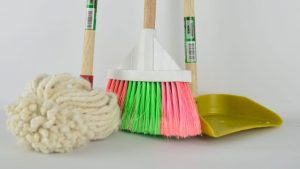This post was last updated on August 12, 2021 by Preethi Sukumaran
I was surprised to read a few days back that Flipkart has signed an MoU with the Indian Textile Ministry to provide an online marketing platform to handloom weavers and their products. Through online marketing platform, Flipkart is also supposed to provide support in data analytics, market intelligence, guidance on how products should be priced, brand building & packaging to the weavers.
Someone reading this report may well question why the government continues to spend money on this Handloom sector. And if so much money, schemes, man hours and support has been already given to boost the handloom sector, is it undeserving of all this aid, as it still hasn’t improved or really turned around?
Handloom Numbers:
When we speak of the handloom sector, we first need to understand its scale through some important numbers. 95% of the world’s hand-woven fabric comes from India and this sector also contributes to India’s export earnings. The Handloom census of 2009 – 10 tells us that that this sector provides employment to 4.33 Million people. This number has reduced significantly from 1995-96, when the number of people employed by this sector was close to 6.5 Million people in either weaving or allied activities. But only 15% of the total fabric produced in our country comes from the handloom sector. Compare this to power loom fabric which in 1956 contributed to only 2.3% of India’s total fabric and today occupies 85% of our fabric market.
In 2011-12, the handloom industry wove 6900 million square metres of cloth. The Government since Independence has (at least on paper) poured thousands of crores of money, and resources down this sector. As of last year, The Textile Ministry’s annual report cites several schemes to rejuvenate the handloom sector. Some of this include:
- Subsidized rates on hank yarn (of 10% on yarn price) under the Mill Gate Price scheme
- Marketing events and promotional activities to help weavers exhibit their wares (about 700 were done last year), A ministry sponsored Handloom week event every year,
- An integrated handloom development scheme with a budget in 2011-12 of 236.5 Crores to provide financial assistance , training in weaving and dyeing, design and management and construction of new handloom sheds
- Institutional Credit scheme – which provides margin money assistance, an interest subsidy for the first 3 years of loan repayment, a credit guarantee trust fund, and promotional activities and camps by banks disbursing the loan to help make weavers aware of the scheme.
- Comprehensive health insurance and health care facilities,
- A scholarship scheme and life coverage under the Mahatma Gandhi Bunkar Bima Yojana
- Diversified Handloom development scheme which is to upgrade weaver skills through workshops, exhibitions, design development, documentation of traditional designs, setting up of Weavers service centres, R&D facilities and Institutes like IIHT, NCTD, etc.
Despite all these measures, people in handloom sector have high levels of poverty, extremely variable incomes and sometime abject penury.
Our discussions with companies like Exind Corporation, which is the company behind Kalpadruma in Chennai, tell us about eerie ghost towns where the handlooms are draped with cobwebs.
Older weavers want their children to have nothing to do with the crafts and handloom weaving appears to be largely the occupation of senior citizens with several 70 year old handloom weavers (as seen in the picture below) continuing with the craft with no younger apprentices in sight to continue the tradition.

Did you know about the Handloom Reservation Act ?
These activities are over and above the Handloom Reservation Act which was passed in 1985 by the Rajiv Gandhi government. This act is still supposed to be under enforcement and regulates 22 types of garments for the exclusive production of the Handloom sector.
When this act was passed, it was criticised as being draconian and unfairly skewed towards the handloom sector. The act was also criticised as being sweeping and including generic categories of garments into the reserved status.
The Handloom Reservation act has defined a handloom to be any loom other than a power loom, and its reach extends to the whole of India. It also gives sweeping powers to the Ministry to include any garments it may seem fit outside of these 22 reserved garments to be included in the Act whenever they feel the need.
Many of the textile products we use every day are regulated by this act. For example, the Handloom reservation act includes almost all cotton and silk saris for the exclusive production of handloom mills or weavers. Similarly Dhotis, Angavastrams, lungis , dress materials, kambals and shawls with a few exceptions are included in this act.
Certain kinds of fabrics and weaves are exempt from this act. For example, synthetic saris made from polyester, nylon, etc and saris made from chiffon, georgette, crepe, and cotton voile are completely exempt and can be made in a power loom. Saris made with blends that use material other than silk and cotton, or where 45% or more of the weight of the yarn is made from synthetic or manufactured yarn like viscose are exempt from this act.
Perhaps because of the protests and lobbying of the powerful textile and power loom lobby from the time this act was passed, till date, this Act remains powerful only in paper. If you leave aside the huge sweep of this act and how it seeks to protect a large part of what we wear and ensure that what we wear remains Handloom, which may be called draconian, the fact is that while the Act remains powerful, its execution has been lackadaisical at best.
In January 1995, out of 72,553 power looms inspected for possible violations 656 cases were booked – this is despite the fact that violation of this act by power looms is more the norm rather than the exception. ( as per some government reports)
So what ails the handloom sector and why are such a large number of weavers struggling in utter penury today? Is the only reason the financial might and concentrated power of the power loom industry? Is the government to blame? Are we also responsible?
Conundrum : Is what I buy even handloom?
The Weaver communities talked about in the ancient Sangam period and even upto the 17th century were integrated entrepreneurs. They had close associations with the cotton cultivators who were generally close by. The cotton bales would reach the villages where they would be hand spun by the women in the weaver families. The yarn would then be woven into fabric. Textile dyeing done either at the yarn stage or after the fabric was printed was either done in-house or by a close association of dyeing craftsmen who would typically be located close to a water body. The dye would be produced from plant based material and then transferred onto the yarn or the fabric. The entire process of textile making was integrated more or less within a geographical location. This meant the weaver had to go nowhere for his raw material or textile accessories.
Resources have now become more and more centralised. Today’s handloom weaver cannot find hank yarn or dyes within his geographical location. As weaving today is done in rural and semi rural areas, weavers have to travel far to obtain their raw materials.
The availability of hank yarn for handlooms is also a serious issue. A hank is a coiled unit of yarn or twine. Handlooms need yarn in this format compared to power looms which need yarn in the cone format.

Under the Handloom reservation act, a spinning mill is supposed to produce 50% of their total marketable output as hank yarn for handlooms. Hank yarn is tax free and has other subsidies. A garment is classified as handloom by the government if the raw material purchased is Hank Yarn. This classification based on raw material is merely for convenience as authorities would find it very difficult to physically monitor the output and then classify it as handloom or powerloom. Further, the supposed output of hank yarn, which is handloom ,is also exempt from excise duty.
So some power looms use this subsidy illegally as follows. They purchase hank at the lower rates, re-wind it in cones to fit their machines and create textiles. Since they purchased hank yarn, they then claim that their output is “handloom” and further avail excise duty exemption. This diversion of the hank yarn to power looms reduces raw material availability for the handloom sector. As a result handloom weavers face a year round shortage of yarn for their fabric. This excise evasion not only diverts yarn from a weaver to a mill, it also mis-classifies power loom output as handloom output! So the power loom owner buys yarn at a subsidized rate, weaves it in his mill & sells it as handloom (again at a lower excise rate) – in this process the handloom weaver loses hank yarn, the government loses excise money and consumers like us don’t get to wear a genuine handloom product even though the label may say “handloom”.
Myth : Handloom garments are expensive & old fashioned
Hank yarn and dye are the raw material used to produce a handloom garment. We have already seen how hank yarn can be diverted from handlooms by the loopholes of subsidies and excise exemption. The basic price of the yarn itself that weavers have to pay in a centralised system of yarn production is much more than what they would have paid in the past, when yarn was available in their villages. High cost machine produced yarn available in large towns or cities is what they have access to today. When weavers who are small scale entrepreneurs buy this high cost raw material, it stands to reason that the garments they produce will also have a correspondingly high price.
Consumers used to low cost, mass produced powerloom fabric are often unable to accept this high cost. The question of design innovation is caught in a classic chicken and egg situation: weavers may be willing to innovate if their market risk is reduced by the investor. Investors are of course willing to have innovation if they are sure their fabric will be sold.
In the meantime no one is addressing us the consumers as we sail forth, shopping in Malls and buying powerloom fabric. We do not know their ramifications of our choices. We do not understand what we are losing as we continue to push our traditional fabric and garments out of our wardrobe.
The biggest strength of a decentralised, village based, weaver system of the past was that regional designs and identities were preserved.
For example, in our earlier post written by Richa Dubey, she spoke about the Leheriya design which was created by artisans in a desert longing for the rain. This longing was immortalised in the flow of rain drops on their garments through their dyeing craft. Similarly, a Baluchari sari from West Bengal had motifs like animals, plants, marriage processions, horse riders of vignettes from the Ramayana outlined in white.

The Kanjeevaram saree which was believed to have been woven 400 years ago have peacocks, parrots, swans, mangoes and leaves as common motifs. The borders have triangular pinnacle like marks which represent the temples in and around this town, which gives this town the sobriquet of the “Temple town”.

With globalisation of fashion, our regional identities and where we come from becomes blurred. And the weaver who continues to craft his fabric taking cues from his environment becomes obsolete and old fashioned.
Myth : Handloom garments are difficult to maintain
Our pieces earlier by handloom and textile enthusiasts talk about the differences wearing a handloom fabric give to its wearer. We have experienced this for ourselves when we wear our Tula rain fed organic cotton handloom shirts, or our Kalakshetra handloom vegetable dyed saris or our Kalpadruma vegetable dyed organic cotton handloom towels.
Handloom garments are extremely breathable and absorbent. So you do not feel sweaty or hot as the fabric allows air to pass through. They also feel very cool and comfortable and soft, especially after they are washed many times. However, they need to be maintained with care – you cannot simply toss them into a machine thoughtlessly like you would with your knits, t-shirts and other powerloom fabric. But this care can reap rich rewards for you as your handlooms will last much much longer.
We are going to write a more detailed post on why there is this difference in handloom garments and how they should be maintained well, and can actually be made to last for decades if not years when done so.
But this post will simply carry a small note on what makes handloom garments different. Natural fibres like cotton and silk require more careful handling compared to synthetics. They are also generally less elastic compared to synthetics which mean that they can shrink or tear under stress unless treated. In large processing plants like those which create cotton knits or t shirts, natural fabrics are specially treated using techniques like mercerisation, or superwashing to enhance the fibre’s properties.
But native handloom weavers have always used local, indigenous methods to enhance the fibre’s strength and ensure that the fibre can withstand the rigours of handloom weaving. Weavers from different states have slightly different ways of tearing yarn. In many places in South India where rice is freely available, rice paste or rice starch is used on the yarn. It is soaked in this paste and then dried before being woven on the loom. In our research we have seen different natural pastes being added to this basic mix including onion paste in some cases.
This natural starch and plant combination along with the handling of the yarn by hand keeps the handloom fabric in better shape compared to powerloom fabric. And as the cotton is gently treated from the beginning it feels soft and comfortable when worn. In order to retain the properties of the handloom garment, it needs to be treated with a similar amount of care from the wearer’s end. But with this care, your handloom saree, skirt or dupatta can retain its colour and be worn just as proudly by you even twenty years down the line.
This post has been able to cover only a few of the issues that assail the handloom sector. We have not even begun to cover the important aspect of fair trade when it comes to this industry which is a point worth pondering about or the question of working in a hazardous occupation, which is a problem associated with chemical dyes. Our upcoming posts will cover all of these and as promised introduce you to some companies and organisations which are worth supporting and are doing sincere and stellar work in this field.
We hope you are enjoying reading our sustainable fabric series and also hope that our series is inspiring you to take a closer look at your wardrobe. Our series on sustainable fabric has the following posts:
- Our introductory post on the sustainable fabric series
- On the One Person Satyagraha and why you should start one
- On the environmental and human health hazards of chemical dyes
- The primer to sustainable Indian fabric is here
- The first part of the textile traditions of India that suit Spring and Summer is here
- The second part of the textile traditions of India that suit Monsoons and Winter is here.
- Our post interveiwing Lata Ganapathy-Ravikiran on Handloom love and why she chooses to support this industry is here.
And do tell us what you think of this new series here or on our Facebook page.





i love handloom